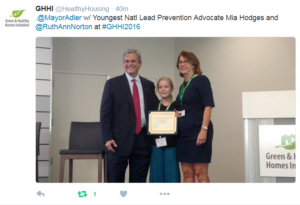 Thank you, and welcome, everyone, to Austin!
Thank you, and welcome, everyone, to Austin!
Austin is a creative, innovative city, which is a nice way of saying we don’t really care about doing things the way they’ve always been done. In fact, Austin is good ideas become real, even if this idea is so new, so radical, that it would get you kicked out of most cities.
This is what it means to Keep Austin Weird. Austin is where Willie Nelson came to reinvent country music. Austin gave the world a new way to shop for groceries with Whole Foods and a new way to catch dinner-and-a-movie with the Alamo Draft House. We are perhaps best known for our tech innovations. First with Dell, which was born in a dorm room up the road at UT, and now Google picked Austin as the first city outside of Mountain View to test their automated cars.
All of these things I’ve mentioned – Google cars, Alamo Draft House, and Whiskey River – aren’t just new, they’re improved. The point of innovation is to do things in a new way so they work better. And Austin is very comfortable with innovation. That’s why while I immediately took to the Green & Health Homes Initiative. This isn’t just a new way to do home repairs. It’s smarter. It works better. It saves people money.
For too long, corners were cut when it came to repairing low-income housing. And we might have saved money on the front end, but we paid for it many times over with worse health outcomes, higher school and work absenteeism, higher energy bills, and lost resale value. We were being pennywise and pound idiotic, dumb, and just plain stupid. Cutting corners did not ultimately cut costs.
That’s why we may not have been one of the first Green & Healthy Homes Initiative sites, Austin was the first city to require these standards for home rehab. Green & Healthy Homes just make sense to us. It’s smarter, so it works better for everyone. And that’s why, last December Ruth Ann Norton and I signed a compact to adopt these standards as the new way we do business in the City of Austin.
From my chair, it made sense to get all six City departments and seven local non-profits who work in this arena aligned along common guidelines. For the families in these homes, it made even more sense. Better health outcomes means less time lost from school, from work, lower healthcare bills, and better lives. More energy efficient homes means lower utility bills. And in a city where an August day in the 80s is called a cold front, saving money on the A/C bill is huge. For the neighborhoods, better home repairs meant stable neighbors and rising home values as families build wealth. For our city, committing to these standards encourages “green collar” jobs.
The question should not by why Austin is the only city to require these standards but why every city hasn’t done this.
There is an old worry that being green costs you money. And that can be true if you are committed to not innovating. You do things the way you’ve always done them, you’re going to get the same result. If that were true for the Green & Healthy Homes Initiative, you might expect Austin’s economy to show some wear and tear.
Since I signed that Green & Healthy Homes Initiative the City of Austin has implemented the Green & Healthy Homes Initiative model for two home repair programs, serving 53 homes for a total of a little over $1 million and somehow our economy continues unabated.
Since we started this program, CNBC and the Kaufmann Institute named Austin the #1 city in the entire country for startups, the American City Business Journals named Austin the #1 city in the country to start a small business, and Forbes named Austin the #1 city for future job growth. Our unemployment rate is so low that you don’t find a job here. In Austin, the job finds you!
And we did all this while increasing tax breaks for homeowners, lowering the property tax rate, and delivering $42.5 million in rate relief from our city-owned electric utility.
I think we’re going to be OK.
Now, let me be clear: I don’t think the Green & Healthy Homes Initiative will turn your city into the next Great American boomtown. But making government smarter so people are healthier and can save and make more money, and communities get better jobs and increased wealth. Certainly this is part of the recipe for success. It seems clear to me that healthier homes make for a healthier economy for everyone.
I am a big fan of social innovations such as the Green & Healthy Homes Initiative and want to do a whole bunch more of them. But just because it’s working here doesn’t mean we can’t make improvements or that you can’t do this bigger and better in your city. That’s the beauty of innovation. You’re never done. You can always improve. There’s always a better way.
And that’s the final thought I’ll leave you with as you face an ambitious program over the next few days. Look at the results. Listen to each other. And let me know if you come up with any great ideas, because odds are we’ll put ‘em to good use in Austin.
Thank you.
